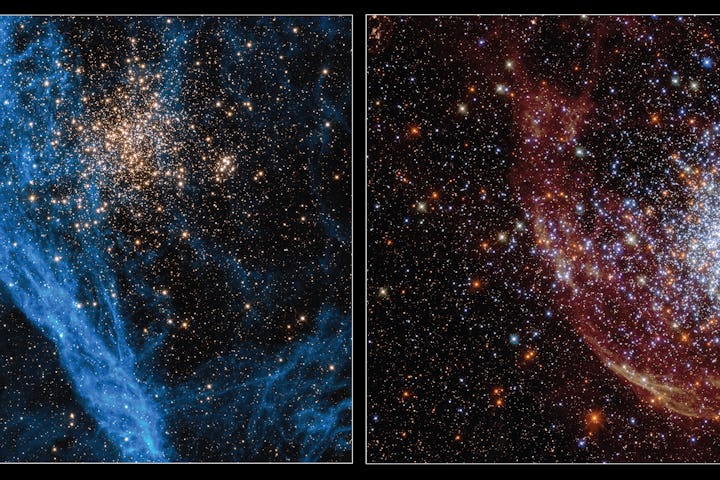Stunning Hubble Telescope Pictures Show 100 Million Year Old Star Cluster
NASA released new photos of a 100-million-year-old globular cluster approximately 160,000 light-years away in the Dorado constellation.

The dependable Hubble telescope has done it again! While everyone is excited about seeing stunning space images from NASA’s newest telescope, the James Webb Space Telescope (JWST), we should never forget that Hubble’s telescope pictures are tried, true, and gorgeous. NASA recently shared incredible images of a star cluster that’s larger than the sun, all thanks to the Hubble telescope. Here’s what you need to know.
NASA released new photos of a 100-million-year-old globular cluster that is approximately 160,000 light-years away in the Dorado constellation. This birthplace for billions of stars isn’t just pretty to look at — which it very much is — but these images are another piece of a puzzle space researchers are trying to put together.
Can you explain what we see in these photos like we’re 5 years old?
What you are looking at here is a cosmic object called NGC 1850. While there are two photos here, one red and one blue, they’re really just two photos of the same area.
NASA explains that they’re different colors and slightly different shapes because the Hubble Telescope used different filters to capture the data. The blue photo was captured using near-infrared light plus some visible light, which is what our eyes can see. The red photo use near-ultraviolet light which helps researchers capture the hottest points of the galaxy.
NGC 1850 is huge, even though the photos don’t capture just how big this cluster is. NASA says it’s 63,000 times the mass of the Sun. Plus, if you were to measure from the inside core of the cluster to the outside, that distance alone is 20-light years in diameter — which means it would take 20 years to travel that distance.
Scientists are excited about any new details they can see from NGC 1850 because it’s an interesting star cluster because it is so big. Researchers theorize that this cluster is so massive because it’s like two in one.
All the stars were kept relatively close when the first galaxy was formed due to the gravitational pull. That pull was so strong that it also brought in hydrogen and helium gasses, which helped form a secondary generation of stars.
To read more about this area, visit NASA!